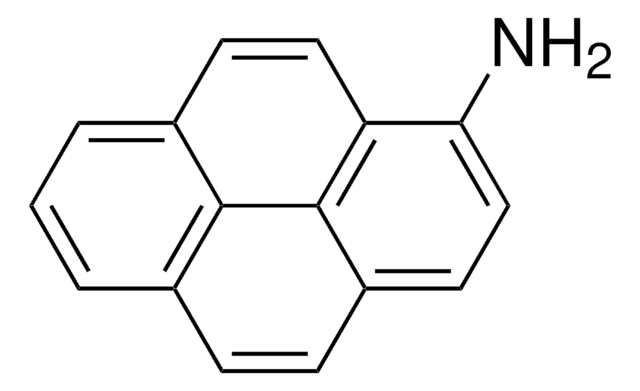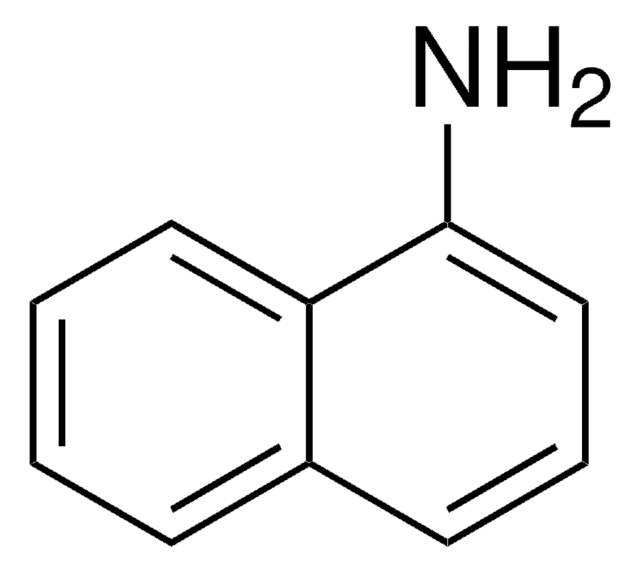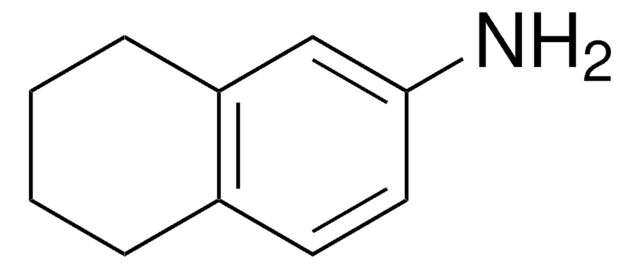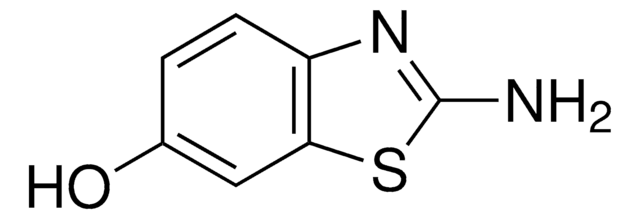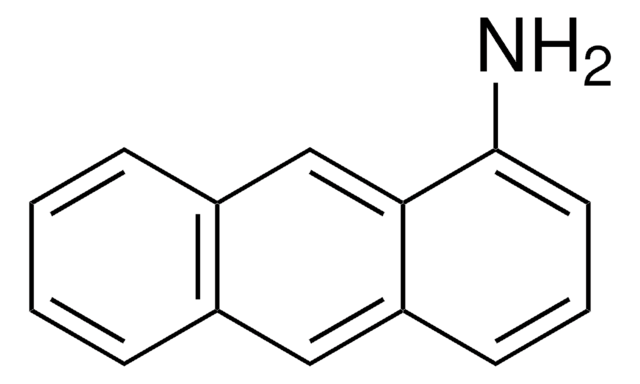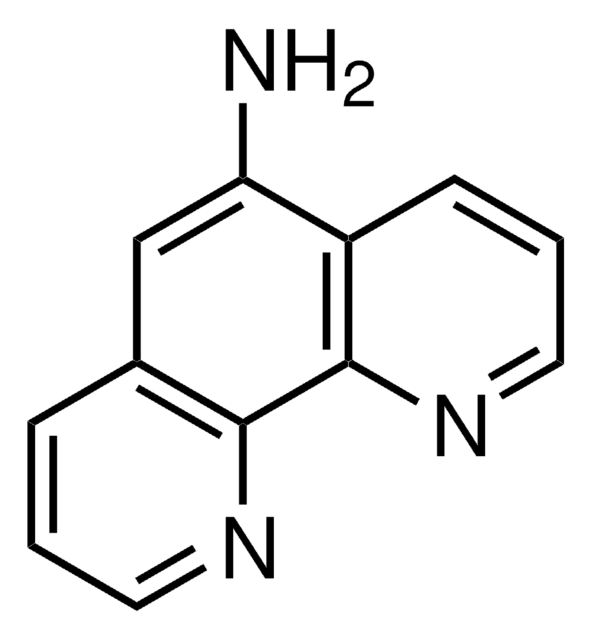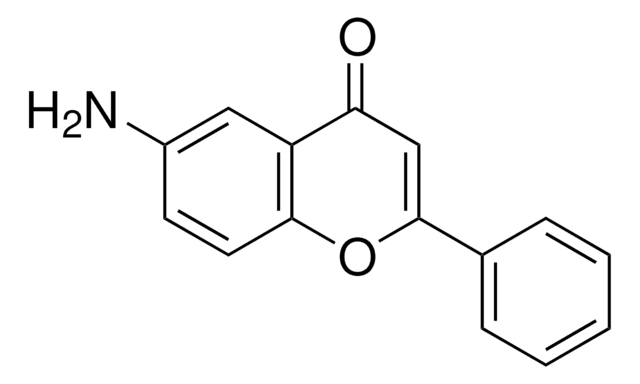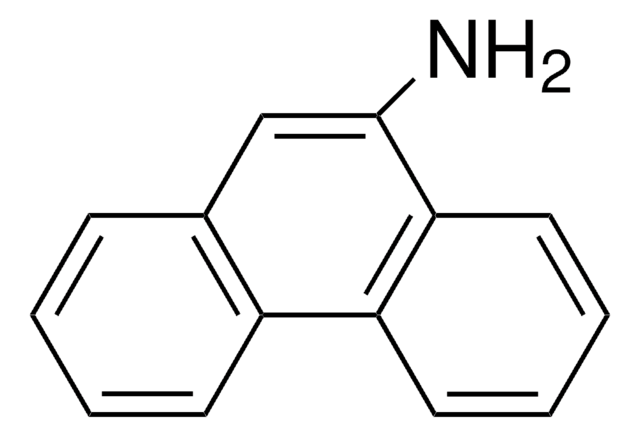All Photos(1)
About This Item
Empirical Formula (Hill Notation):
C18H13N
CAS Number:
Molecular Weight:
243.30
EC Number:
MDL number:
UNSPSC Code:
12352100
PubChem Substance ID:
NACRES:
NA.22
Recommended Products
Quality Level
Assay
95%
form
solid
mp
209-211 °C (lit.)
SMILES string
Nc1cc2c3ccccc3ccc2c4ccccc14
InChI
1S/C18H13N/c19-18-11-17-13-6-2-1-5-12(13)9-10-15(17)14-7-3-4-8-16(14)18/h1-11H,19H2
InChI key
KIVUHCNVDWYUNP-UHFFFAOYSA-N
Looking for similar products? Visit Product Comparison Guide
Application
Produces tumors in mice.
Signal Word
Warning
Hazard Statements
Precautionary Statements
Hazard Classifications
Acute Tox. 4 Oral
Storage Class Code
11 - Combustible Solids
WGK
WGK 3
Flash Point(F)
Not applicable
Flash Point(C)
Not applicable
Personal Protective Equipment
dust mask type N95 (US), Eyeshields, Gloves
Regulatory Information
新产品
Choose from one of the most recent versions:
Already Own This Product?
Find documentation for the products that you have recently purchased in the Document Library.
K B Delclos et al.
Cancer research, 47(23), 6272-6277 (1987-12-01)
6-Nitrochrysene (NC) and 6-aminochrysene (AC) have been shown to be potent lung and liver carcinogens when administered in multiple i.p. doses to preweanling mice. 1,6-Dinitropyrene has been shown to be a strong hepatocarcinogen but a weak lung carcinogen in this
S Lahmy et al.
Toxicology, 29(4), 345-356 (1984-02-01)
By microspectrofluorimetry on single living cells (murine fibroblasts 3T3), we have obtained monoexponential decreases of fluorescence intensity for benzo[a]pyrene (B[a]P) and 6-aminochrysene (6a-chrysene) metabolism. These kinetics are characteristics of B[a]P and 6a-chrysene metabolism and histograms can be drawn from the
Yi Zhang et al.
Environmental toxicology and chemistry, 25(7), 1920-1925 (2006-07-13)
Chrysene is one of the basic polycyclic aromatic hydrocarbons that are toxic environmental pollutants. The photoproducts of 6-aminochrysene (6AC) include 5,6-chrysenequinone (5,6-CQ) along with some minor products. In this study, cytotoxicity and genotoxicity of 6AC and 5,6-CQ to a human
S M Morris et al.
Mutation research, 310(1), 45-54 (1994-10-01)
Cells from the human lymphoblastoid cell line, AHH-1, were exposed to two direct-acting mutagens, ethyl methanesulfonate (EMS) and ethyl nitrosourea (ENU), and to three carcinogens that require metabolic activation to an electrophile, benzo[a]pyrene (B(a)P), 6-aminochrysene (6-AC), and 6-nitrochrysene (6-NC); mutation
T Marczylo et al.
Mutagenesis, 9(3), 233-239 (1994-05-01)
6-Aminochrysene was converted into mutagen(s), in the Ames test in the presence of Aroclor 1254-induced hepatic S9, microsomal and cytosolic fractions, the first being the least and the last the most efficient activation system. The cytosolic activation of 6-aminochrysene decreased
Our team of scientists has experience in all areas of research including Life Science, Material Science, Chemical Synthesis, Chromatography, Analytical and many others.
Contact Technical Service